Breast Reconstruction in Mexico City
Search and Compare the Best Clinics and Doctors at the Lowest Prices for Breast Reconstruction in Mexico City

Find the best clinics for Breast Reconstruction in Mexico City
With Medijump you can browse 1 facilities offering Breast Reconstruction procedures in Mexico City. The cheapest price available is $1,823 in Guadalajara
Breast Reconstruction in Mexico
Price: $ 1,823
Breast Reconstruction in Guadalajara
Price: $ 1,823
Breast Reconstruction in Mexicali
Price: $ 2,807
India offers the best prices Worldwide
Price: $ 477
Cirplast Plastic Surgery, located in Alvaro Obregon, Mexico City, Mexico offers patients Breast Reconstruction procedures among its total of 29 available procedures, across 1 different specialties. The cost of a Breast Reconstruction procedure starts from ฿284,000, whilst the national average price is approximately ฿172,296. All procedures and treatments are undertaken by just a small team of specialists, with 2 in total at the Clinic, and they are not accredited by any recognized accreditations institutes
Compare Before & After Photos of _procedure_photos.phpBreast Reconstruction
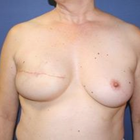
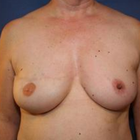
Front view
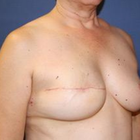
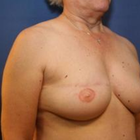
Half-side view
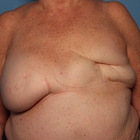

Front view
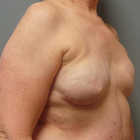
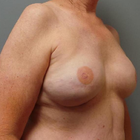
Half-side view


Front view
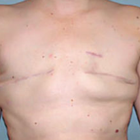
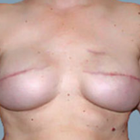
Front view
WHY US?
At Medijump, we're making medical easy. You can search, compare, discuss, and book your medical all in one place. We open the door to the best medical providers worldwide, saving you time and energy along the way, and it's all for FREE, no hidden fees, and no price markups guaranteed. So what are you waiting for?

Free

Best Price

Widest Selection

Risk-Free
What you need to know about Breast Reconstruction in Mexico City
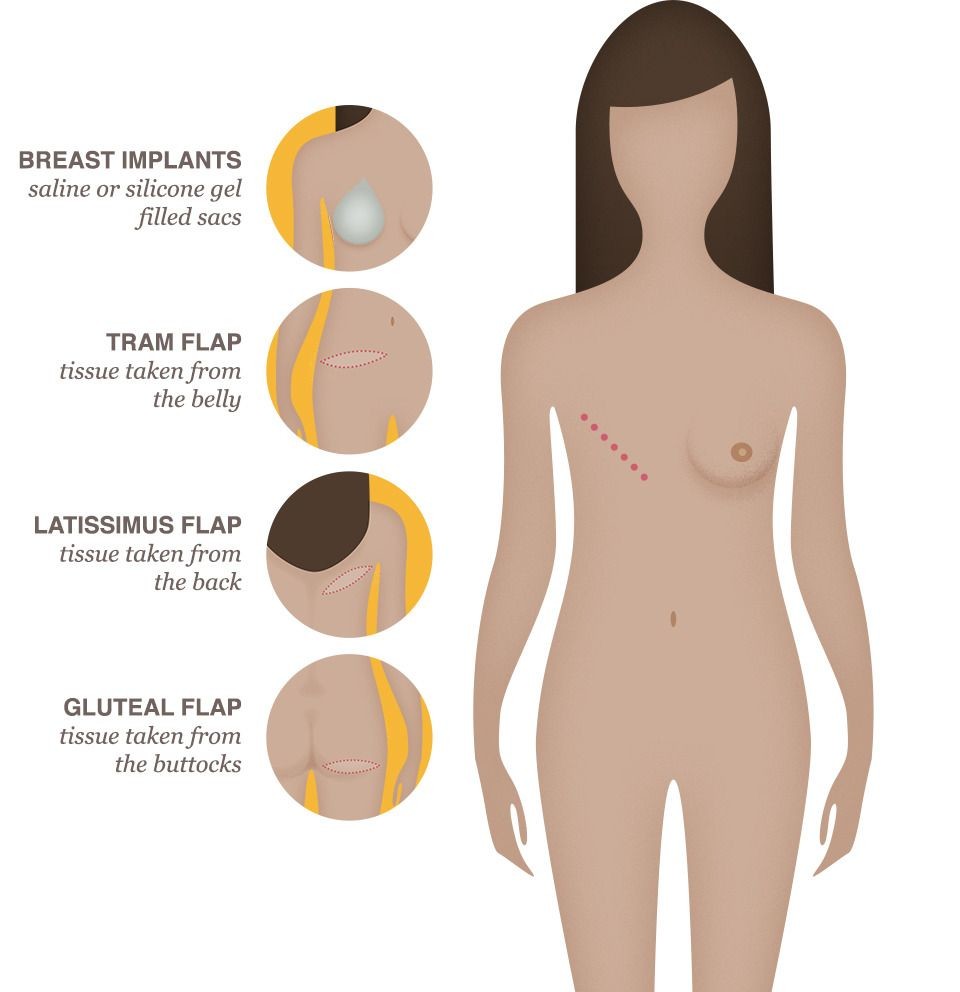
Breast reconstruction is a significant surgery undertaken to rejuvenate the physical form of a woman's chest after losing one or both breasts to cancer or another disease. In Mexico City, medical centres are well-equipped with top-tier talent in plastic surgery to facilitate this intricate procedure. Every woman's journey is different, and her treatment plan is personalized, considering her unique circumstances and needs.
It's heartening to know that breast cancer treatments like chemotherapy or radiation therapy aren't impeded by reconstruction. Moreover, this surgery doesn't spike the risk of cancer coming back. Undeniably, breast reconstruction is a major surgery with inherent risks, including chances of infection, complications with wound healing, and potential dilemmas related to implants.
What is the cost of Breast Reconstruction in Mexico City?
Undergoing surgery like Breast Reconstruction brings along a financial commitment. The expense varies extensively, depending on many factors like the complexity of the procedure, the medical professional performing the surgery, the hospital's facility, and the region, amongst others. Generally, the cost might range between $15,000 to $50,000, including multiple surgeries or intricate techniques within this estimate.
Thankfully, in many cases, insurance plans cover such surgical procedures, especially given mandates like the Women's Health and Cancer Rights Act of 1998 in the U.S. Still, out-of-pocket expenses associated with co-payment or deductibles can add up. It's recommended to navigate these aspects with your insurance provider and your chosen healthcare facility in Mexico City.
What does a Breast Reconstruction Procedure Involve?
Breast reconstruction generally happens in stages, starting with the most complex first, which may either occur at the same time as the mastectomy or later, based on the individual’s specific health conditions or treatment plan.
Two main techniques are employed in breast reconstruction. One is the use of an implant, saline, or silicone to recreate the breast shape. Two, autologous or flap reconstruction where tissue from the patient’s body like the abdomen or thigh is relocated to recreate the breast shape. The method selected is dependent on individual factors like the patient’s health, personal choice, cancer type, and stage.
After the primary surgery and post an adequate healing period, the surgeon performs a second procedure to recreate the nipple and areola. Later, to give it a natural look, the nipple-areola complex is tattooed. Remember that although it is a common procedure, complications might arise involving reaction to anaesthesia, bleeding, infection, poor healing or the need for further interventions.
How Long Should I Stay in Mexico City for a Breast Reconstruction Procedure?
Post-breast reconstruction surgery, patients typically stay in the hospital for two to five days. However, if the reconstruction was done immediately after the mastectomy, the stay could extend from three to six days.
Overall, a patient should expect to remain in Mexico City for approximately two weeks post-surgery. This allows enough time for necessary follow-ups and to address any complications, if they arise. As with any major surgical procedure, do not hasten the healing process.
What's the Recovery Time for Breast Reconstruction Procedures in Mexico City?
The recovery timeframe for breast reconstruction procedures in Mexico City varies from patient to patient. Generally, for implant-based procedures, patients may take about four to six weeks to recuperate before they return to normal routines. For more complex autologous techniques, particularly those using abdominal tissue, patients might require six to eight weeks for recovery.
Recovering patients need to temper their activities during this period. Avoid lifting heavy objects and defer strenuous exercise until your physician gives a clear signal. Medical assistance should be promptly sought if any discomforting symptoms like chronic pain, redness or swelling surface.
What's the Success Rate of Breast Reconstruction Procedures in Mexico City?
Medical success cannot just be measured in terms of complication-free postoperative progress or longevity of implants used in breast reconstruction. Patient satisfaction with their surgery, their psychological well-being following the operation, their perception of body image, and their quality of life post-surgery are equally important factors to consider. Studies indicate that between 85% to 90% of women who have undergone breast reconstruction are satisfied with the long-term results.
In Mexico City, dedicated hospitals and healthcare facilities strive to offer high-quality treatment, ensuring the best possible surgical outcomes using progressive technology and experienced professionals. Still, everyone's response to surgery varies, and outcomes depend on factors such as overall health, age, body type, and compliance with surgical advice.
Are there Alternatives to Breast Reconstruction Procedures in Mexico City?
Indeed, there are alternatives to breast reconstruction in Mexico City. The journey of every woman is unique and how she chooses to deal with the loss of a breast, or both, is a highly personal decision. Alternatives include:
- Breast Prostheses or Forms: They are silicone forms that imitate the appearance and feel of natural breast tissue. They come in diverse sizes, shapes and colours to closely match the woman's skin tone.
- Flat Closure: In this method, the surgeons sew up the chest wound smoothly, without constructing a breast mound. This option appeals to women who choose not to have more surgeries or body implants.
- Opting not to undergo reconstruction at all, also termed as "going flat: This method exhibits the woman's choice to live comfortably with her new body shape without artificial substitutes or further surgeries. It is a fully personal decision deserving respect and support.
Each of these options has pros and cons, and the choice depends on the woman’s personal preference, health status, lifestyle, and perception of her body. Regardless of the choice, it’s important to regularly monitor breast health and engage in practices that promote overall wellness.
What Should You Expect Before and After the Breast Reconstruction Procedure?
Before the surgery, comprehensive discussions with the surgeon will take place to understand treatment objectives, outcomes, and possible complications. Preoperative tests, lifestyle modifications, and nutritional advice may form a part of the preparatory process.
Postoperative care is equally important: discomfort, swelling, and bruising are normal and subside over time. Pain management strategies will be provided to help you manage discomfort effectively. Your surgeon will provide personalised guidance on caring for your surgical site, usage of medications, and physical activities.
What sort of Aftercare is Required for Breast Reconstruction Procedures in Mexico City?
The following points should be considered post-operation:
- Follow the instructions given by your doctor and take your medicines as and when prescribed.
- Consult a nutritionist for a diet plan. A healthy diet helps you recover faster.
- Do not wear a padded or underwire bra until allowed by your doctor.
- Use surgical bras in the early few days after the surgery.
- Avoid excessive unnecessary movement of your breasts.
- Do not lift heavy objects and children - it could stretch on your stitches.
- Change your bandage whenever it gets dirty. Germs can cause infection.
- Do not take a bath when the bandages are still intact. A wet bandage can also be the cause of infection.
- Abstain from sexual activity for at least 6 weeks.
- Take rest - give yourself time to recover.
How Do I Prevent Cancer from Recurring?
Preventing cancer recurrence largely revolves around a balanced, healthy lifestyle coupled with regular medical check-ups. Regular exercise, maintaining a healthy weight, and eating nutritiously can contribute to cancer prevention. Smoke cessation and limiting exposure to secondhand smoke are crucial for both prevention and postoperative recovery.
Regular breast self-examinations, as well as mammograms and follow-up visits, are critical for early detection of any recurrence. Stress management techniques like yoga, meditation, and spending time in nature can also play an essential role in overall health.
Your medical team in Mexico City is there to support you, offering advice tailored to your individual health status and medical history. Remember, proactive health checks are key to maintaining overall health and preventing the recurrence of diseases like cancer.
What is the ideal time to have Breast Reconstruction surgery after a Mastectomy in Mexico City?
The decision regarding when to have Breast Reconstruction following a Mastectomy in Mexico City is largely based on the individual's health status, treatment plan, personal preferences, and discussions with the oncology team. Breast reconstruction can be done at the time of mastectomy (immediate reconstruction) or at a later date (delayed reconstruction). Immediate reconstruction might offer psychological benefits and less overall surgery since both procedures are done together. Yet, if additional treatments such as radiation therapy are required post-mastectomy, opting for delayed reconstruction could be advisable to avoid risks posed by radiation to the new construct.
Remember that deciding on the timing of breast reconstruction is a personal choice and should be made in consultation with your healthcare providers. They can provide specific guidance based on your health condition and treatment plan.
How Will Breast Reconstruction in Mexico City Impact My Routine Mammograms and Breast Cancer Detection?
Breast reconstruction surgery may impact the way routine breast cancer screenings are conducted. After a mastectomy with or without reconstruction, women usually don't need routine screening mammograms on the treated side since all breast tissue has been removed. However, they would need routine mammograms for the untreated breasts.
If you've had reconstruction using your own body tissue, your surgeon or oncologist will guide you on whether or not you'll require mammograms on the reconstructed breast. Remember, mammograms can still be performed on reconstructed breasts, and self-breast exams should be a regular part of your health routine.
Whilst the information presented here has been accurately sourced and verified by a medical professional for its accuracy, it is still advised to consult with your doctor before pursuing a medical treatment at one of the listed medical providers
No Time?
Tell us what you're looking for and we'll reachout to the top clinics all at once
Enquire Now

Popular Procedures in Mexico City
Prices Start From $497

Prices Start From $208

Prices Start From $834

Prices Start From $500

Prices Start From $93

Prices Start From $85

Recommended Medical Centers in Mexico City for Breast Reconstruction

- Interpreter services
- Translation service
- Religious facilities
- Medical records transfer
- Medical travel insurance
- Health insurance coordination
- TV in the room
- Safe in the room
- Phone in the room
- Private rooms for patients available

- Interpreter services
- Translation service
- Religious facilities
- Medical records transfer
- Medical travel insurance
- Health insurance coordination
- TV in the room
- Safe in the room
- Phone in the room
- Private rooms for patients available

- Interpreter services
- Translation service
- Religious facilities
- Medical records transfer
- Medical travel insurance
- Health insurance coordination
- TV in the room
- Safe in the room
- Phone in the room
- Private rooms for patients available

- Interpreter services
- Translation service
- Religious facilities
- Medical records transfer
- Medical travel insurance
- Health insurance coordination
- TV in the room
- Safe in the room
- Phone in the room
- Private rooms for patients available

- Interpreter services
- Translation service
- Religious facilities
- Medical records transfer
- Medical travel insurance
- Health insurance coordination
- TV in the room
- Safe in the room
- Phone in the room
- Private rooms for patients available

- Interpreter services
- Translation service
- Religious facilities
- Medical records transfer
- Medical travel insurance
- Health insurance coordination
- TV in the room
- Safe in the room
- Phone in the room
- Private rooms for patients available

- Interpreter services
- Translation service
- Religious facilities
- Medical records transfer
- Medical travel insurance
- Health insurance coordination
- TV in the room
- Safe in the room
- Phone in the room
- Private rooms for patients available
Breast Reconstruction in and around Mexico City
About Mexico City
Mexico City is the capital of Mexico and is the largest and populated city with a population of around 9 million, whereas the greater metropolitan area has around 21.2 million.
Mexico City is not only the political, administrative, and financial center of Mexico but also a major center for medical tourism within the country. It is a popular destination for affordable and quality medical care for many US and Canadian citizens and recently has started to attract Europeans and some Asian medical.
The City offers health care facilities and procedures at international standards and at a fraction of the cost when compared to the US and other countries. According to the Ministry of Health in Mexico, the competitive cost of medical care in the country allows an average saving of about 50% to 70% in various treatments and surgical procedures, and with the added benefit of small waiting times.
Mexico City offers state-of-the-art medical care in Cosmetic and Plastic Surgery, Cardiology, Orthopaedic, fertility treatments, and dental procedures. It has many famous hospitals with well-trained and board-certified doctors, and advanced medical equipment. Medica Sur, Hospital Espagnol, and Hospital Angeles, Dentalia Mexico City, and Ortopedia DF are some renowned hospitals and clinics in Mexico City. They have private rooms with all modern facilities and offer high standards of nursing care and the hospital staff all speak good English, which makes communication very easy.
Popular Areas in Mexico City
The City is located in the valley of Mexico and is surrounded by Mountains and two stunning snow-covered volcanoes, Popocatepetl and Iztaccihuatl tower above it. Though the city is very large, most of the popular attractions are in the historic city center, ‘Centro Historico de la Ciudad’. This is a 5.8 square mile UNESCO World Heritage site that has more than 14,000 important structures from the 16th to 19th Century.
Some important landmarks to visit in Mexico City are –
- Zocalo – The Constitution Square is right at the heart of the city. It measures around 240 meters in each direction and is the largest square in the world. The three major tourist attractions, the National Palace, the Metropolitan Cathedral, and the Templo Mayor dominate this area.
- The National Palace –is the official seat of power of the President and is situated on the east side of the Zocalo, The combination of history, beautiful architecture, and the best Diego Rivera murals in Mexico City make it a must-visit destination.
- Mexico City Metropolitan Cathedral – Made out of basalt and grey sandstone, this structure rests on top of the old Aztec temple precinct. It is one of the oldest and largest churches in the western hemisphere. Its prominent features are the bell towers and the statues of Faith, Hope, and Charity on the Clock Tower.
- Templo Mayor – It comprises the remains of the Great Temple of Tenochtitlan (of the Aztec period). It includes the finely sculpted circular disc which is more than three meters in diameter and weighs eight-and-a-half tons.
- The National Museum of Anthropology – One of the famous museums in the world and is in Chapultepec Park. It is very prominent due to the large monolithic figure at its entrance. It has a vast and impressive collection of archaeological discoveries and information about the life of the contemporary Indian inhabitants of Mexico.
The Palace of Fine Arts, Chapultepec Park, National History Museum, and Paseo de la Reforma and the Angel of Independence are other important landmarks of the city.
Weather and Climate in Mexico City
Mexico City has a subtropical climate because of its location in the high plateaus. It experiences mild and pleasant weather throughout the year. Summers are warm and winters are mild. The annual average temperature is 64°F. The temperature does not vary much throughout the year but the warmest month is May and the coldest is January. The average maximum temperature in summer is 77°F and the average winter temperature is 45°F.
The average annual rainfall of Mexico City is high at 33.31 inches (846.0 mm). June to September is the rainy season, with July being the wettest month. During the summer, there can be a few spells of rain.
The City has dry periods from January to April and November to December. February is the driest month of the year.
Getting Around in Mexico City
You can reach Mexico City by flying into Mexico International Airport which is known as Benito Juarez International Airport. It is the busiest airport in Mexico and serves many airlines. The major Mexican airlines Aeromexico and Aeromexico Connect operate flights to many Latin American cities and domestic and international destinations from this airport. Many American Carriers also have direct flights to Mexico City. Domestic carriers like Interjet and Volaris also operate out of the airport, connecting Mexico City to other domestic cities. The other airport in the city, Licenciado Adolfo Lopez Mateos International Airport (TLC) services low-cost domestic airlines.
There are many bus operators that offer bus service from US cities to Mexico City. The City also offers a well-planned transportation system to get around in which is the metro system, the downtown rail, light rail, normal buses, BRT (bus rapid transport), minibusses, and trolleybuses. Public transportation is very cost-effective and efficient, but can also be very crowded.
If you don’t want to travel by public transport, then you can choose Uber and other private taxi services. They are a bit more expensive but are stress-free.
Tourist Visas in Mexico City
Foreign Nationals wanting to enter Mexico must get a visa in advance unless they belong to any of the 67 eligible visa-exempt countries like the United States, UK, Canada, and Australia, or one of the three Electronic Authorization System eligible countries. Mexico also offers visa exemption to the people of any nationality who have a valid visa from the US, UK, Canada. They can travel to Mexico with their valid passports and can stay for up to 180 days.
However, citizens of countries like India, Russia, China, Sri Lanka, and many other countries need to apply and get a visa in advance to travel to Mexico for tourism.
Additional Information
- The currency used in Mexico City is the national currency of Mexico, the Mexican Peso (MXN). You can exchange your national currency for Pesos at any of the banks, or at Foreign Exchange Bureaus. The currency value of one US dollar is 18.84 MXN. You can also use your debit, credit, and travel cards in the city.
- Mexico City has all the major national and international banks. In such a large city, there are no shortages of ATMs.
- Spanish is the language widely spoken in Mexico City. Nahuatl, Otomi, Mixtec, Zapotec, and Mazahuaare are other commonly spoken indigenous languages. Due to the large expat population, English is also popular in the city.
- The family community is an important aspect of Mexican life. The locals are very conscious of their responsibilities towards their family members.
- Catholic Christianity or Roman Catholicism is the major religion in Mexico City. 83% of the population follow this religion.
- You will find the City celebrating Mexican holidays, both historic and religious throughout the year. Some of the important holidays are the –
- Constitution Day – First Monday of February
- Benito Juarez Day – Third Monday in March
- Independence Day – September 16
- Revolution Day – Third Monday in November
- Navidad (Christmas) – December 25
Popular Searches
- Plastic Surgery in Thailand
- Dental Implants in Thailand
- Hair Transplant in Thailand
- Breast Augmentation Thailand
- Gastric Sleeve in Thailand
- Gender Reassignment Surgery in Thailand
- Laser Hair Removal in Bangkok
- Botox in Bangkok
- Dermatology in Bangkok
- Breast Augmentation in Bangkok
- Coolsculpting in Bangkok
- Veneers in Turkey
- Hair Transplant in Turkey
- Rhinoplasty in Turkey
- Stem Cell Therapy in Mexico
- Rhinoplasty in Mexico
- Liposuction in Mexico
- Coolsculpting in Tijuana
- Rhinoplasty in Korea
- Scar Removal in Korea
- Gastric Sleeve in Turkey
- Bone Marrow Transplant in India
- Invisalign in Malaysia
- Plastic Surgery in the Dominican Republic
- Tummy Tuck in the Dominican Republic
- Plastic and Cosmetic Surgery in Poland
- Rhinoplasty in Poland
- Hair Implant in Poland
- Dental Implants in Poland
- IVF in Turkey